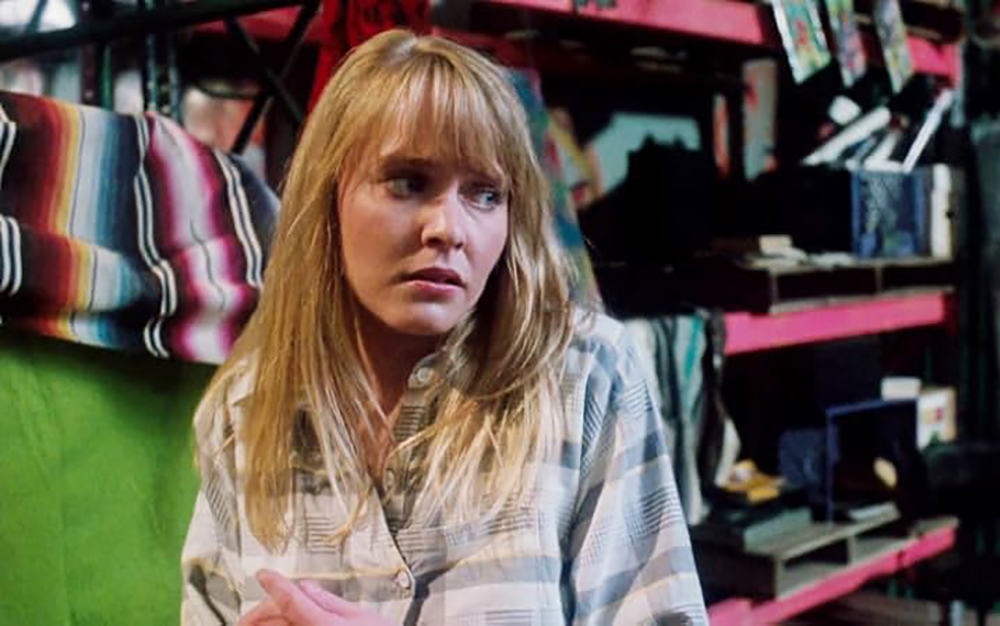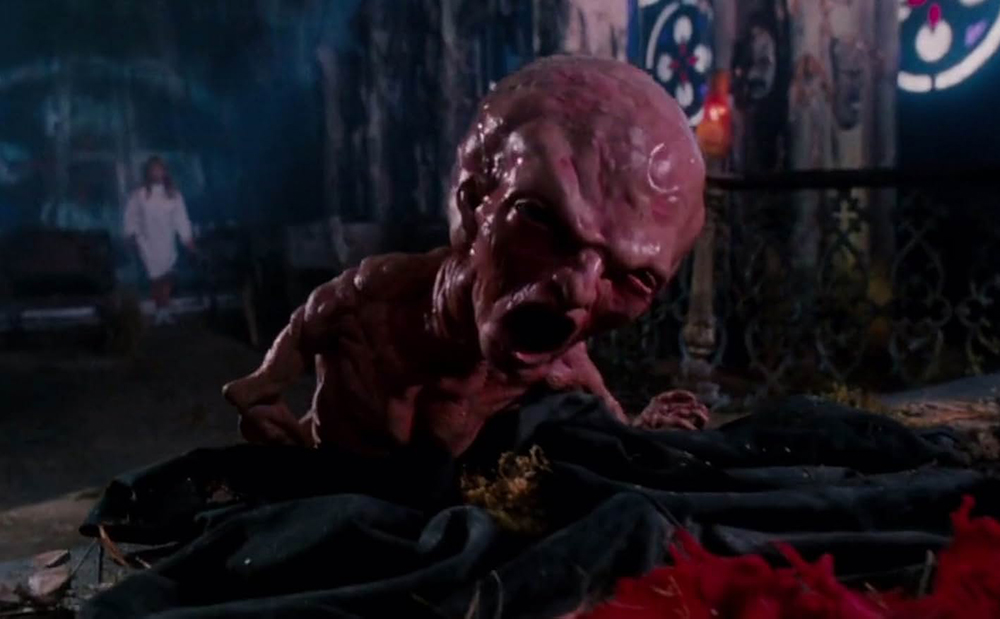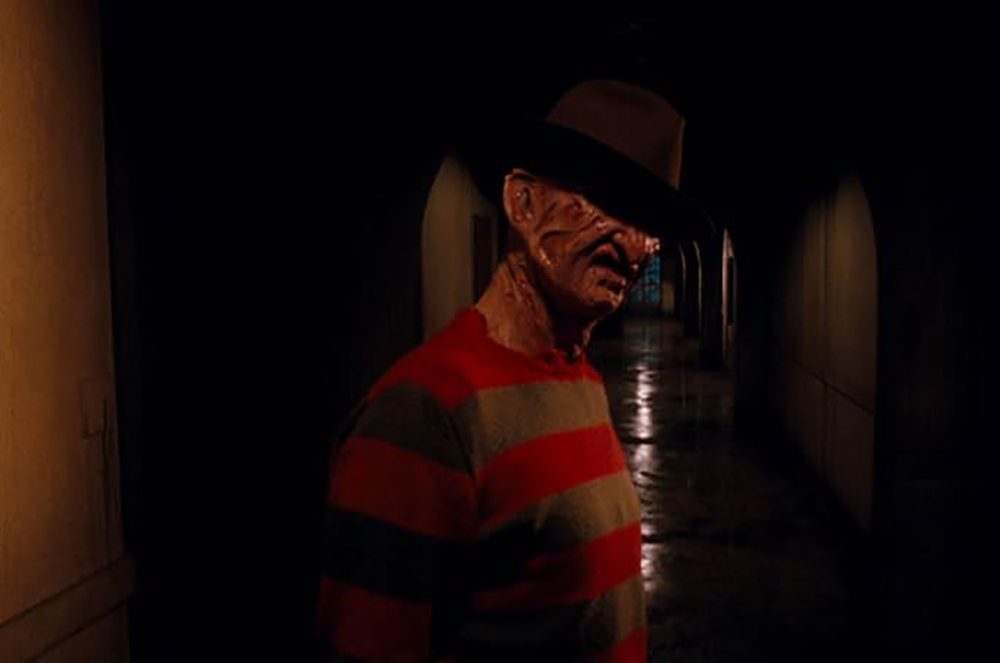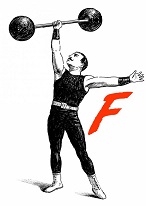In 2022, when I wrote my review for “A Nightmare on Elm Street Part 3: Dream Warriors,” I said, ‘this is the film that killed Freddy.’ I was wrong. This is. “A Night on Elm Street: The Dream Child” is certainly the worst “Nightmare” film the franchise has ever produced, and—if I’m being honest—one of the worst films I’ve ever seen. There’s no rhyme nor reason to anything that happens here. It’s a series of disjointed dream sequences (inside dream sequences, etc.) et infinitem. It’s a marathon of Freddy jokes and nauseating scene-jumps that barely resemble a narrative. Alice from the last film (Lisa Wilcox reprising her role) is back, but even she can’t save the film from absurdity. “Dream Child” doesn’t feel ‘80s. It doesn’t feel horror. It doesn’t really feel like anything at all.
There might be ease in blaming Director Steven Hopkins for these affronts, but he was clearly just a cog in a sequel wheel that was out of control. In fact, during the opening credits for the last two films, the ‘director’ title was saved for almost last, as if they were an afterthought to a vehicle that didn’t belong to them. The screenplay is written by John Skipp, Craig Spector, and Leslie Bohem, and you can tell the writing team was straight out of ideas. In fairness, it has to be hard to keep this series going, and in that way it’s difficult to issue blame. “Part 4” felt ‘80s and seemed to be drawing from the “Friday the 13th” motif when they revived Freddy. Here, no reason for Krueger’s continued existence exists; it seems besides the point.
A Showcase for Special Effects and Little Else
The basic plot here is that Alice (Wilcox) and friends are graduating high school, but she’s having disturbing dreams. Her boyfriend Dan is supportive (Dan Hassel, returning) and she has some other friends. They are played by Kelly Jo Minter, Erika Anderson, and Joe Seely. Aside Seely—who plays Mark—the film gives them virtually no backstory. They become Freddy’s targets when he earmarks them as Elm St. kids; however, since he needs Alice to get to other kids—and she never provided him access—the film just supposes the audience won’t need a reason either. This makes sense when we’re dealign with Jason Voorhees or Michael Myers, but it never has with Freddy. That’s why you can tell that “Part 4” tried harder. And you can tell it worked, because we actually cared about its teens and their struggle.
Robert Englund is top billed (again) and I don’t know why. It’s like top billing Jason or Michael. The budget for this movie was $8 million, and it’s clear that was all special effects. Englund must’ve spent more time in the makeup chair than the writers did in development, and even less time honing his lines, because there’s nothing to work with. Freddy attacks people and cracks jokes. That’s the entire film. Yet the body horror is off the charts. Where last go-around it was contained to one or two scenes, here it seems the entire point of the film. Whatever scenes had the potential to be scary are overproduced or joked away, and there’s not one scene of actual fright in the entire 89 minute run. Kruger is never once scary; he doesn’t utter anything that answers for a threat or even a taunt along the way.
Absurdity on top of Absurdity

The kills are over-the-top and graphic, as mentioned. One attack as a youth drives a car has so many dream-within-a-dream sequences you can’t tell what’s real and what’s not. Another one as he attacks aspiring model Greta (Erika Anderson) at a dinner table is the height of absurdity. A later scene involving a pool and pulling another victim within a comic book showed potential, but the film joked them away. And all the while, Alice continues to labor on about her unborn baby that Kruger is trying to ‘get to.’ Why Alice is pregnant and why Krueger wants the baby is a mystery. An even bigger mystery is why the film’s writers didn’t scrap this absurd idea from the word go.
“The Dream Child” is tedious and goes absolutely nowhere. Its best parts are its scant scenes at Springwood High School and Alice’s now-sober father, the latter played with a dedication by actor Nicholas Mele that deserved a better movie. Aside from that, there’s jump-roping girls, various doctors and people that want to take Alice’s baby, and dream sequences featuring the rape of Amanda Krueger (Beatrice Boepple) hinted at in Part 3. Robert Englund is amidst the ‘100 maniacs’ that assault Amanda in a bizarre cameo. Did Freddy father himself? Is he that eternal? And all the while, Alice continues to say one thing after another to medical personnel that should land her in a straight jacket, but the film just cuts to the next scene, or whatever answers for one.
The Weakest ‘Nightmare’ Film

“The Dream Child” is just a bad movie. Most of the time it does’t even feel like a movie at all, but a series of disjointed images its writers felt audiences expected from a “Nightmare” film. I couldn’t imagine having seen this film at the Box Office—expecting a continuation of the Freddy saga—and being entertained. Most everyone seems like they’re phoning it in, the story’s off the rails, and it clambers on for 15 minutes longer than it should have. For context, this is now my third time watching the film over the last decade in an attempt to give it a chance. And try as I might, I just can’t find anything salvageable about it. The score is nonexistent, Freddy is a comic, and it’s little more than a showcase for special effects. No matter which way you slice it, it’s a hard pass on this one.
Check streaming options for ways to watch “A Nightmare on Elm Street: The Dream Child.”



